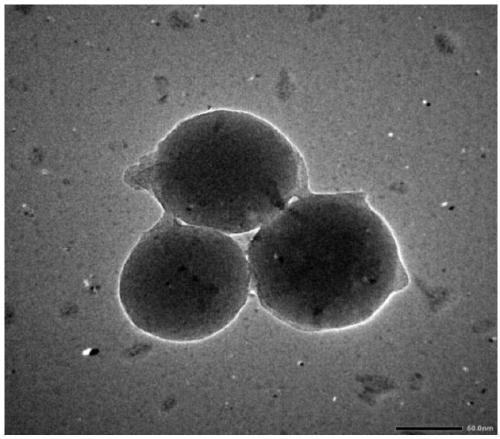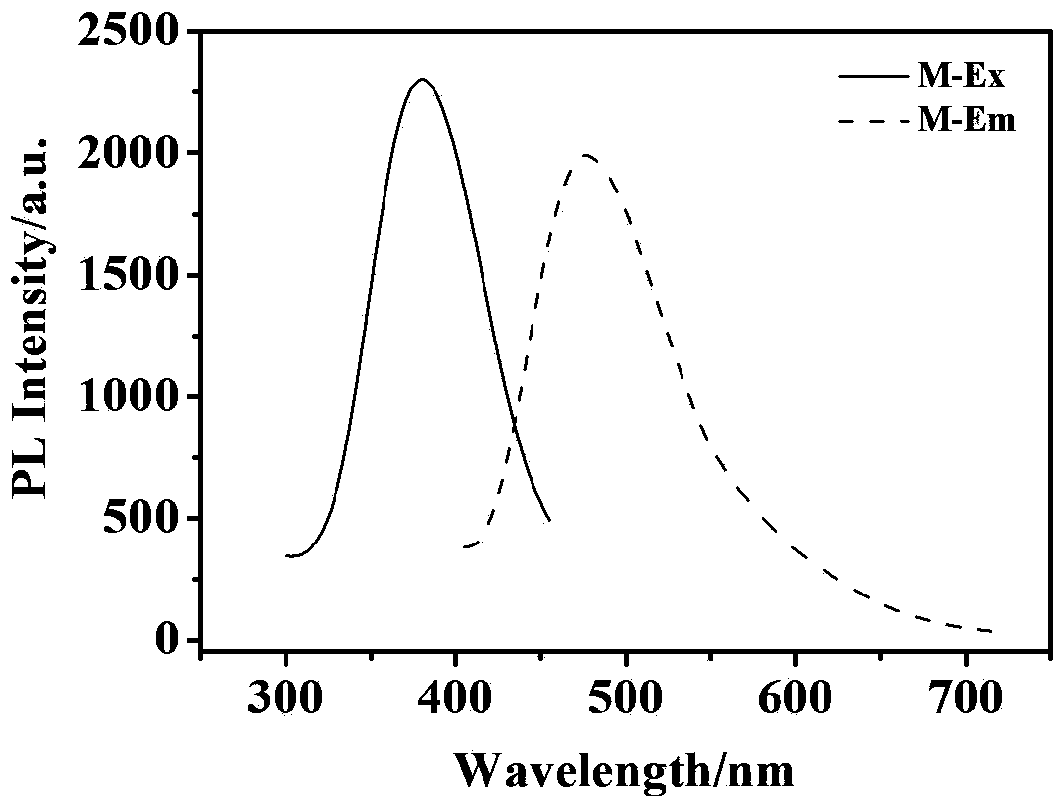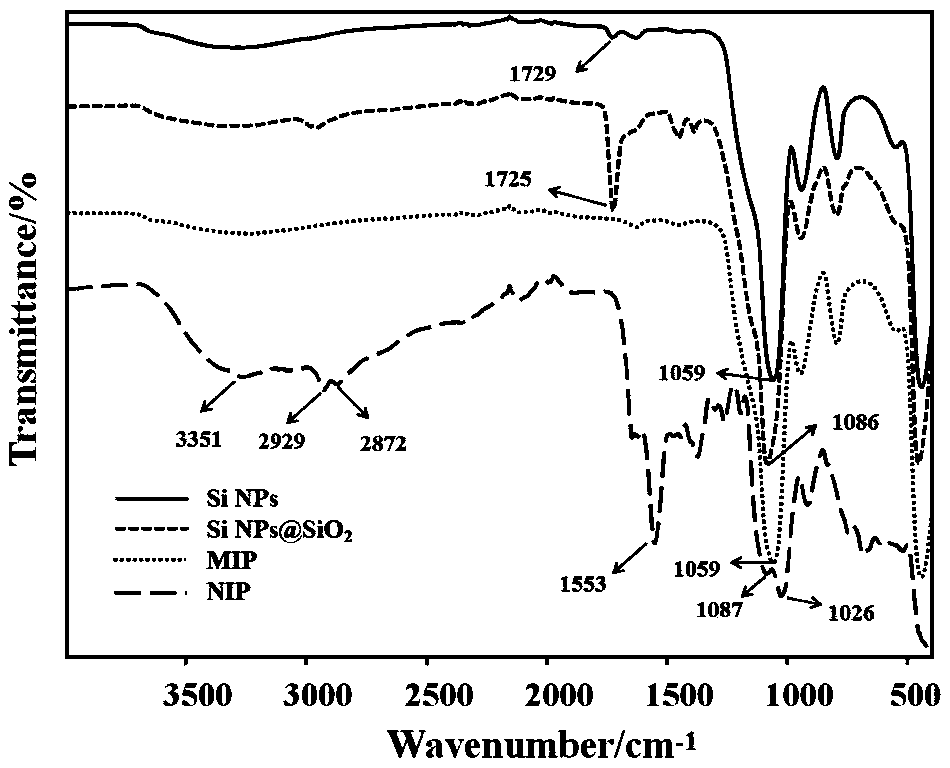Preparation method of fluorescent double-template antigenic-determinant imprinted polymer based on silicon nanoparticles
A technology of imprinted polymers and epitopes, applied in the direction of fluorescence/phosphorescence, medical preparations with non-active ingredients, medical preparations containing active ingredients, etc., can solve the problem of low therapeutic effect, large side effects, functional monomers and carriers Single and other problems, to achieve the effect of simple operation, high selectivity, and improve the effect of specific recognition
- Summary
- Abstract
- Description
- Claims
- Application Information
AI Technical Summary
Problems solved by technology
Method used
Image
Examples
Embodiment 1
[0021] A method for preparing a fluorescent double-template epitope imprinted polymer based on silicon nanoparticles, using fluorescent nanoparticles coated with Si NPs as a carrier, linear nonapeptide in the extracellular region of HER2 overexpression and drug doxorubicin (DOX) is used as a double template, and the method of double template imprinting, epitope imprinting and surface imprinting is used to obtain imprinted polymers, including the following steps:
[0022] 1) Add 0.3180g of sodium citrate as a reducing agent to 8mL of glycerol, blow in argon and stir, add 3mL of silicon source N-(2-aminoethyl)-3-aminopropyltrimethoxy after 20min Silane (DAMO); after 10 minutes, the reaction precursor solution was transferred to an atmospheric pressure microwave reactor at a temperature of 180°C for 15 minutes, and the obtained orange-yellow solution was transferred to a dialysis bag with a molecular weight cut-off of 1KDa, and dialyzed for 24 hours to obtain Si NPs aqueous solut...
Embodiment 2
[0032] A method for preparing a fluorescent double-template epitope imprinted polymer based on silicon nanoparticles, the preparation steps are basically the same as in Example 1, the difference is that the quality of zinc acrylate in step 3) is 20 mg, and the fluorescent type Dual template imprinted polymers.
Embodiment 3
[0034] A method for preparing a fluorescent double-template epitope imprinted polymer based on silicon nanoparticles, the preparation steps are basically the same as in Example 1, the difference is that the quality of zinc acrylate in step 3) is 40 mg, and the fluorescent type Dual template imprinted polymers.
PUM
| Property | Measurement | Unit |
|---|---|---|
| particle size | aaaaa | aaaaa |
Abstract
Description
Claims
Application Information
 Login to View More
Login to View More - R&D
- Intellectual Property
- Life Sciences
- Materials
- Tech Scout
- Unparalleled Data Quality
- Higher Quality Content
- 60% Fewer Hallucinations
Browse by: Latest US Patents, China's latest patents, Technical Efficacy Thesaurus, Application Domain, Technology Topic, Popular Technical Reports.
© 2025 PatSnap. All rights reserved.Legal|Privacy policy|Modern Slavery Act Transparency Statement|Sitemap|About US| Contact US: help@patsnap.com



